When there’s too much fat in the liver, it’s called a fatty liver. This can be due to various reasons like diet, drinking habits, and lifestyle. Luckily, there are natural ways to help the liver heal, especially in the early stages.
Here are some natural remedies for early-stage fatty liver.
Green Tea
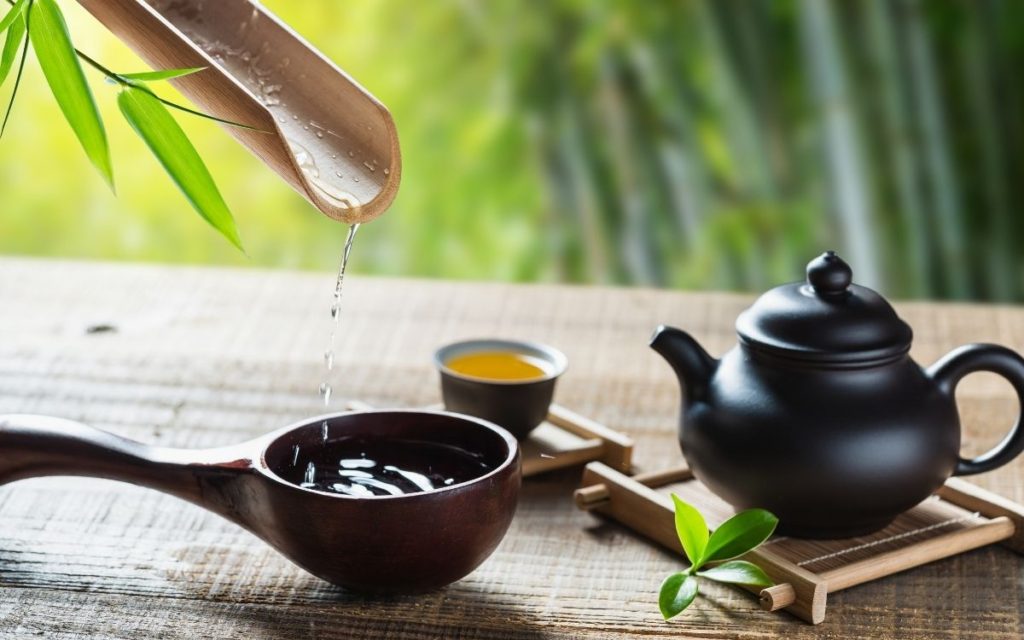
Green tea is more than just green-colored water. It comes from the same plant as regular black tea, but it’s processed differently, which helps it retain its green color and unique health properties.
Why’s It Special?
Burns Fat: You’ve probably heard about metabolism, right? It’s like your body’s engine, determining how fast you burn food for energy. If your metabolism is a speedy car, drinking green tea is like hitting the gas pedal! It helps speed up the rate at which your body burns fat, making it a friend for those wanting to shed a few pounds.
Packed with Catechins: This might sound like a fancy word, but think of catechins as tiny bodyguards for your cells. They protect your body from damage and are especially found in green tea. These catechins also play a role in reducing the fat stored in the liver.
Anti-inflammatory: Remember the last time you got a bruise or a swelling? That’s inflammation. While inflammation can be the body’s way of healing, too much of it, especially inside our bodies, isn’t good. Green tea comes to the rescue with its compounds that help calm inflammation down.
How to Use Green Tea:
If you’re thinking about adding this wonder drink to your day, here’s how:
- Brewing: Boil water and let it cool for a minute or two. Pour the hot water over the green tea leaves or a tea bag. Let it steep for about 3-4 minutes. You can adjust the brewing time based on how strong you like your tea.
- How Much?: For the best health benefits, consider drinking a couple of cups daily. That’s not just good for your liver but for overall health.
- Extra Tips: Remember, green tea contains caffeine (though less than coffee). So, if you’re sensitive to caffeine or drinking it close to bedtime, it might disrupt your sleep. And always, moderation is key. Drinking gallons of green tea won’t double the benefits, so stick to a couple of cups.
Green tea isn’t just a trendy drink; it’s packed with health benefits, from burning fat to calming inflammation. So next time you’re choosing a drink, consider going green!
Amla ( Gooseberry)
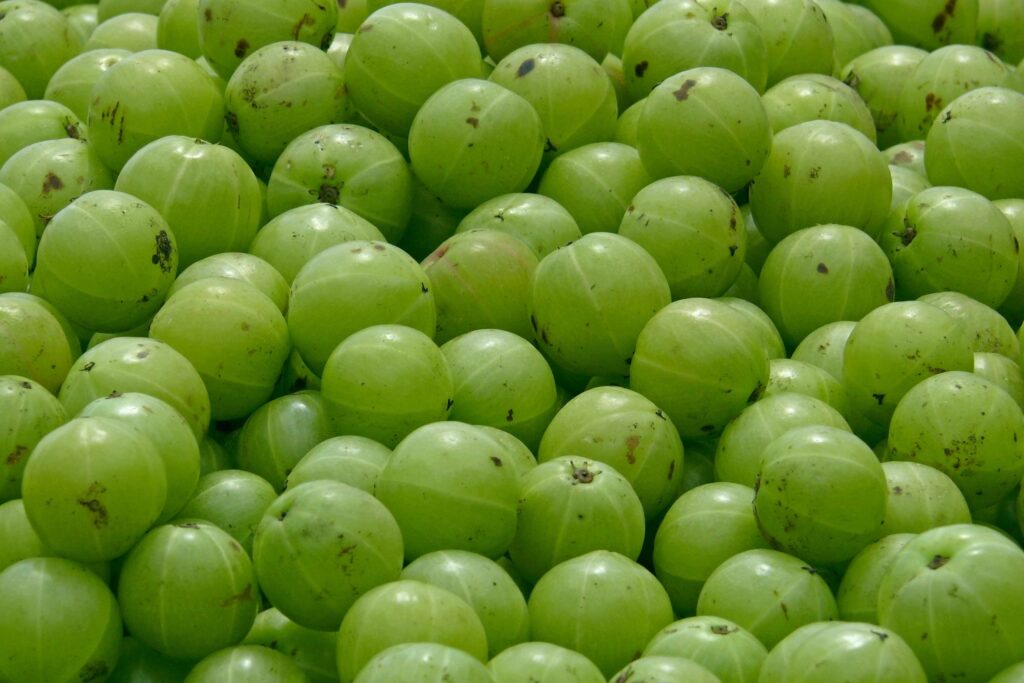
Let’s start with a small story. Imagine there’s a magical fruit in a fairy tale that the heroes eat to get super strength. Well, in the real world, we have something quite close, and it’s called Amla!
What is Amla?
Amla, often called the Indian gooseberry, is a green, sour fruit found in India and other parts of Asia. While it might not give you superhero strength, it definitely packs a punch when it comes to health benefits.
Why’s Amla Amazing?
- Vitamin C Galore: You might know oranges for their vitamin C, but amla is a powerhouse! It has loads of this vitamin, which is a major player in keeping your immune system strong, helping wounds heal, and even keeping your skin looking fresh.
- Antioxidants: Think of antioxidants as your body’s little helpers. They fight off harmful things called free radicals, which can cause damage inside your body. Thanks to amla’s richness in antioxidants, it’s like giving your body an extra shield against illness.
- Quercetin: Here’s another fancy word. Simply put, quercetin is a type of nutrient in amla that has the cool job of helping to burn fat cells and boosting your digestion. Imagine it’s like a mini gym workout for your food!
- Ayurveda’s Star: Ayurveda is an ancient Indian system of medicine, and guess what? They absolutely love amla! They’ve been using it for ages to help with all sorts of health issues, especially problems related to inflammation (when parts of your body get red and swollen).
How to Use Amla:
If you’re thinking, “Alright, I’m sold! How do I use this magic berry?”, here’s a simple recipe:
- Making Amla Juice: First, take a fresh amla and remove its seed. Pop it into a blender with a bit of water.
- Strain It: Once it’s blended into a liquid, strain it to get rid of any solid bits.
- Warm it Up: Pour the juice into a cup and add some warm water. This not only dilutes the strong taste but also makes it soothing to drink.
- Cheers!: Drink this detoxifying mixture once a day. Think of it as a daily health tonic to keep your body revved up.
In a world filled with health trends, amla stands out as a natural and time-tested superstar. It’s not just a sour fruit; it’s a bundle of health benefits waiting to be unlocked. So next time you’re looking for a health boost, why not give amla a shot?
Turmeric
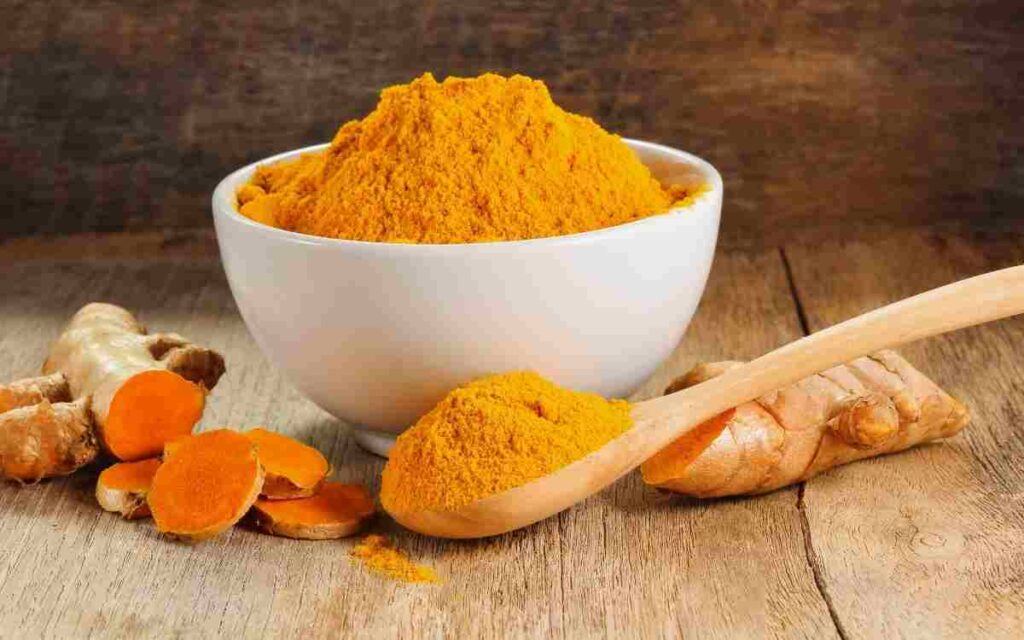
Turmeric is a yellow spice often used to flavor foods, especially in Asian cuisine. It’s what gives curry its golden color! But turmeric isn’t just good for making food tasty. This humble spice comes with a truckload of health benefits, especially for the liver.
Why Turmeric for Fatty Liver?
- Natural Inflammation Fighter: Inside turmeric lies a powerful compound called curcumin. This isn’t a fancy perfume or a rare gem but a natural ingredient that fights inflammation. Inflammation is when parts of your body become red, swollen, and sometimes painful. Now, you might be wondering, what’s that got to do with the liver? When there’s too much fat in the liver, it can become inflamed, leading to damage. By reducing this inflammation, turmeric can help protect the liver.
- Powerful Antioxidant: Think of antioxidants as bodyguards for your cells. They keep harmful invaders, called free radicals, from causing damage. Curcumin, our star from turmeric, is also an excellent antioxidant. So, not only does it calm inflammation, but it also protects the liver cells from harm.
- Fat Absorption Boost: A fatty liver, as the name suggests, has too much fat. Turmeric might help in this department too! It’s believed that curcumin can boost the way your body absorbs fat, ensuring that less of it accumulates in the liver.
How to Use Turmeric for Fatty Liver:
While you can surely enjoy turmeric in curries and other dishes if you’re aiming for those liver benefits, here’s a simple way:
- Turmeric Drink: Take a glass of warm water. Warm water is often easier for the body to absorb and feels soothing.
- Add the Golden Touch: Mix in 1–2 teaspoons of turmeric. This turns the water into a beautiful golden hue and infuses it with all the goodness of turmeric.
- Stir and Sip: Give it a good stir to make sure the turmeric is well mixed. Drink this once a day. It’s like giving your liver a warm, healing hug!
It’s incredible how something as simple as a spice can have such potent benefits for our health. But remember, while turmeric is fantastic, it’s just one piece of the puzzle. A balanced diet, regular exercise, and reducing things like alcohol and processed foods are also vital for a happy liver.
If you’ve got concerns about your liver or any other health issue, always consult a healthcare professional. And the next time you spot that bright yellow spice in your kitchen or grocery store, give it a nod of respect. Turmeric truly is golden in every sense!
Apple Cider Vinegar
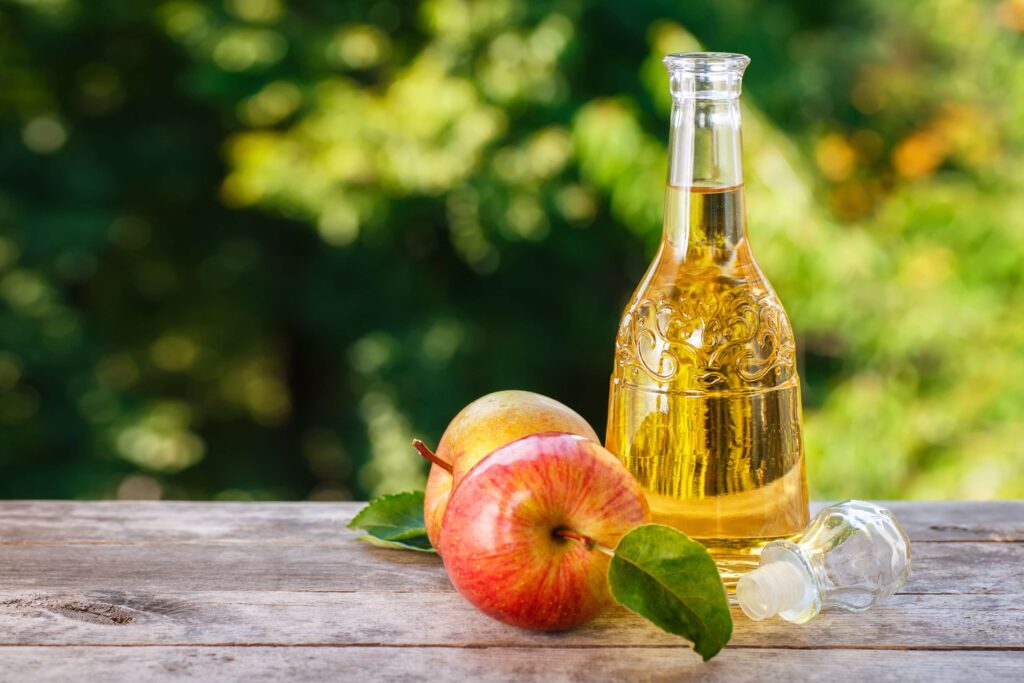
Imagine there’s a secret potion that’s been sitting right under our noses for centuries, touted to have numerous health benefits. No, it’s not from a fantasy novel. It’s apple cider vinegar!
What is Apple Cider Vinegar (ACV)?
Apple cider vinegar, or ACV as it’s fondly abbreviated, is essentially made from fermented apple juice. When apples are crushed and their juice is extracted, bacteria and yeast are added to start the fermentation process. The sugars from the apples turn into alcohol, and then into vinegar. The result? A tangy liquid that holds a special place in many kitchen and medicine cabinets.
Why is ACV Good, Especially for the Liver?
- Natural Detox: Every day, our bodies encounter toxins, from the food we eat to the air we breathe. The liver is our internal filter, cleaning these out. ACV acts like a detox agent, helping our liver in this cleaning process, ensuring fewer toxins stay behind.
- Battling Fat Accumulation: A fatty liver is like a sponge that’s absorbed too much fat. ACV is believed to help reduce this fat buildup, giving the liver a breather.
- Cholesterol Controller: ACV isn’t just great for fighting fat in the liver. It’s also known to help balance cholesterol levels. Balanced cholesterol means a happier, healthier liver and heart.
- Inflammation Calmer: Remember our earlier chat about inflammation? It’s not always our friend. ACV steps in here too, helping to reduce inflammation, ensuring our liver remains calm and collected.
How to Use ACV for Maximum Benefit:
- Step 1: Choosing the Right ACV: Not all apple cider vinegars are created equal. Look for one that says ‘with the mother’. “Mother” in ACV refers to a cloudy substance that might settle at the bottom. It’s packed with beneficial enzymes, proteins, and friendly bacteria.
- Step 2: Mixing Your Potion: Take a cup of warm water (not too hot). Warm water can be gentler on the stomach and helps with absorption. Now, pour in 1 tablespoon of ACV. Stir it well. It’ll have a tangy scent and taste, but that’s the goodness you’re aiming for!
- Step 3: Drink on an Empty Stomach: For best results, have this ACV mixture every morning before you eat or drink anything else. It’s like giving your liver a morning boost before the day starts!
- Step 4: Consistency is Key: Like all natural remedies, don’t expect instant miracles. Consistency is vital. Make it a part of your daily routine.
Safety Note: While ACV has many benefits, it’s also acidic. Drinking it straight could be harsh on your teeth and stomach. Always dilute it in water, as instructed. If you ever feel discomfort, consider reducing the amount or frequency.
Apple cider vinegar isn’t just a kitchen ingredient. It’s a versatile health tonic with a rich history of medicinal use. By incorporating it into your daily routine, you’re not only giving your liver a helping hand but also embracing a holistic approach to wellness. Just remember, as with all remedies, it’s one part of a larger health puzzle. Always keep a balanced lifestyle and consult with healthcare professionals if you have specific concerns.
Lemon
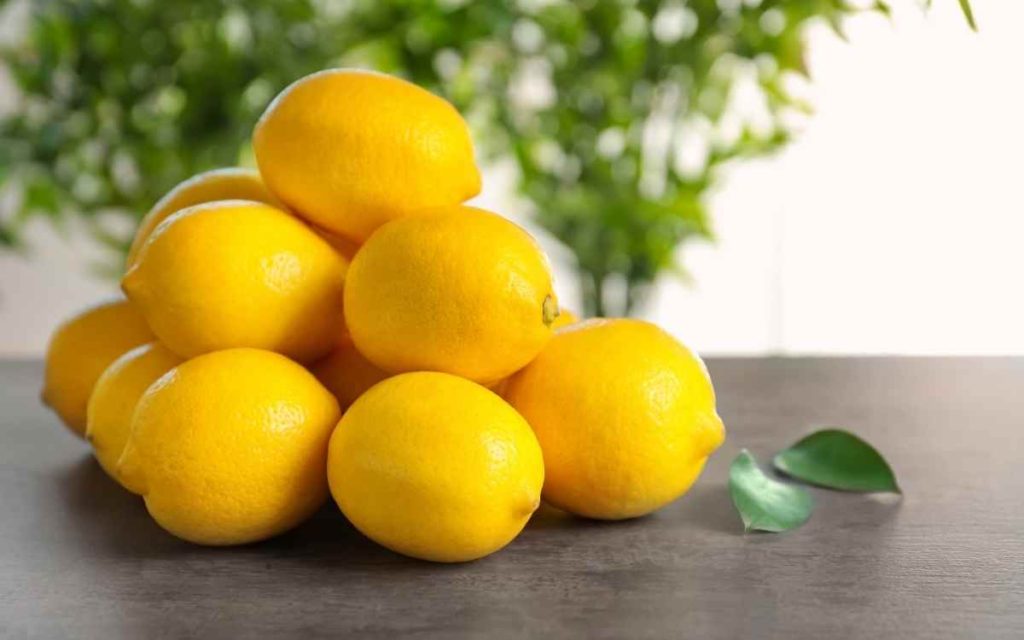
Think about those moments when you take a refreshing sip of a cool lemonade on a hot day, or when you add a slice of lemon to your tea to add that zesty twist. While lemons are famous for their refreshing taste, they’re also undercover superheroes for our health, particularly the liver.
What’s So Cool About Lemons?
Firstly, lemons aren’t just for garnishing dishes or making beverages; they are little yellow packets of wellness. If your liver had a list of BFFs, lemon would definitely be on it. But why? Here’s the scoop:
- Vitamin C Powerhouse: When you think of vitamin C, maybe oranges come to mind first. But lemons? They’re right up there. Vitamin C is like a loyal soldier fighting for our body, protecting our cells and keeping our skin radiant.
- Antioxidant Magic: Imagine little shields inside our body, protecting us from harmful invaders that want to cause damage. These shields are called antioxidants. Lemons have them in abundance, ensuring that the liver cells stay protected from harmful free radicals.
- Liver-loving Traits: That fancy word “hepatoprotective”? It simply means something that protects the liver. Lemons come with these naturally protective traits, especially handy for those who might have had a little too much alcohol, leading to liver stress.
Steps to Using Lemon for Maximum Liver Love:
- Step 1: Choose Your Lemon: Not all lemons are created equal. It’s always good to go for fresh, organic lemons if possible. They’re the most potent and free from pesticides.
- Step 2: Extract the Goodness: Cut the lemon in half and squeeze out its juice. You might want a juicer or a squeezer for this, but your hands will do the job too. All you need is a teaspoon of this liquid gold.
- Step 3: Warm Water Mix: Grab a cup of warm water. Why warm? It’s not only soothing but can also be absorbed by our body more easily. Pour your teaspoon of lemon juice into this cup.
- Step 4: Morning Ritual: Before diving into your breakfast, or even that morning coffee, drink this lemon-infused warm water on an empty stomach. Think of it as a morning cleanse for your liver, setting a healthy tone for the day!
- Step 5: Keep it Up: To truly witness the benefits, make it a part of your daily routine. One cup, every morning. It’s simple yet effective.
Note on Caution: Lemons are acidic. So, while they come with these great benefits, you don’t want to overdo it. Too much might not be friendly to your teeth or stomach. Always dilute lemon juice in water, and if you ever feel discomfort, maybe cut back a bit.
Lemons might seem ordinary, but as you’ve now discovered, they’re nothing short of amazing. With their vitamin-rich, antioxidant-packed profile, they not only add flavor to our dishes but also play a significant role in keeping our liver in top shape. So, the next time you see a lemon, give a nod of thanks to this citrusy hero for all its goodness!
Milk Thistle (Silymarin)
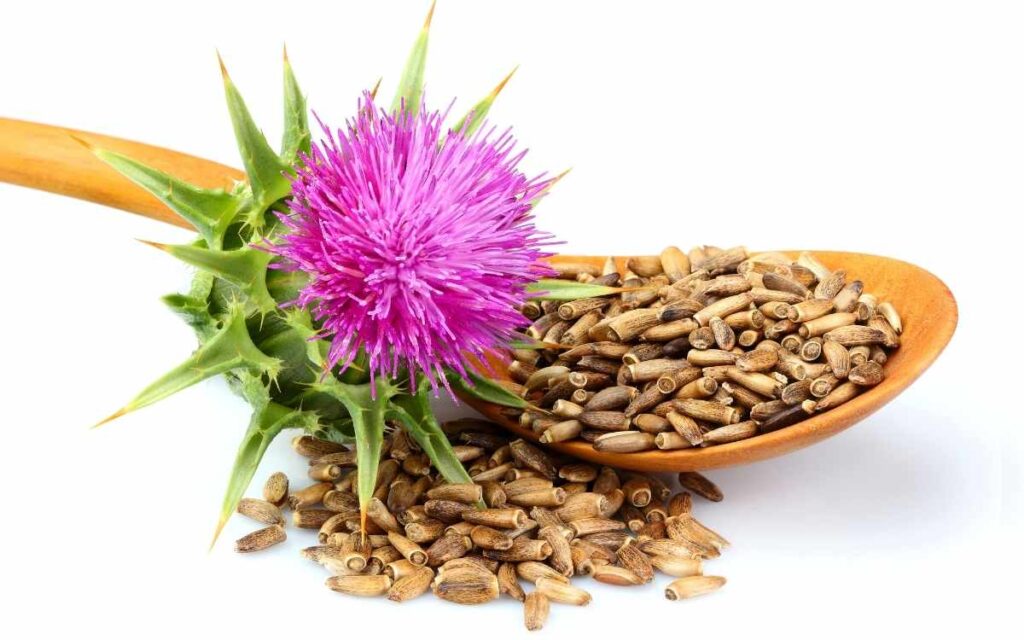
Once upon a time, in the vast landscape of ancient Europe, a plant with spiky leaves and vibrant purple flowers was discovered. While it may have seemed like any ordinary plant, this was the milk thistle, a true treasure trove of health benefits, especially for the liver.
What is Milk Thistle (Silymarin)?
Milk thistle isn’t your typical plant. When you dig deeper, especially into its seeds, you discover silymarin. Think of silymarin as a special elixir made up of several compounds like silybin, silychristin, and silydianin. These aren’t fancy names of medieval knights, but potent elements within the milk thistle seed that come together to form this liver-loving essence.
Why Has Milk Thistle Been Treasured for Centuries?
- Liver’s Best Friend: For over two millennia, humans have turned to milk thistle to support their bile duct and liver health. The liver is our body’s hardworking filter, and milk thistle acts like a gentle tune-up service for it.
- Protector in Shining Armor: Modern research hints that milk thistle might have liver-protective qualities. It’s like a personal shield for your liver, ensuring it stays safe and functions well.
- Cellular Rejuvenator: Our liver is always at work, and like any worker, it can get tired and damaged. Milk thistle is believed to give a helping hand, possibly promoting the regeneration of liver cells.
- Inflammation Calmer: Inflammation is like an angry bee inside our body. While it’s essential for healing, too much can be harmful. Silymarin from milk thistle may help soothe this inflammation, especially in the liver.
- Antioxidant Power: Silymarin is like a superhero when it comes to battling harmful invaders, known as free radicals. With its strong antioxidant effects, it keeps these bad guys at bay, ensuring our liver remains unharmed.
Using Milk Thistle:
Now, while it’s fantastic to know about these potential benefits, it’s crucial to understand that simply plucking a milk thistle plant and chewing on it won’t do the trick. Instead:
- Milk Thistle Supplements: Most people opt for milk thistle supplements available in health stores or online. They come in various forms like capsules, powders, or liquids.
- Dosage: Always follow the recommended dosage on the product or as advised by a health professional. It’s like any medicine; you don’t want too little or too much.
- Consistency: For any natural remedy, consistency is key. It’s not a magic potion for instant results but a gradual helper.
- Stay Informed: Human studies on milk thistle have given mixed results. It’s essential to be aware that while many people swear by its benefits, the scientific world is still exploring.
A Word of Caution:
Milk thistle, like all supplements, should be taken responsibly. Always consult with a healthcare professional, especially if you’re pregnant, nursing, or on other medications.
Milk thistle, with its rich history and potential benefits, truly stands out in the world of natural remedies. Whether you’re looking to support your liver health or tap into its antioxidant prowess, this age-old herb offers a holistic approach. Remember, as with all things, moderation and knowledge are essential. Respect the thistle, and it just might return the favor!
Reverse Your Fatty Liver By Susan Peters Review PDF>>>
Garlic
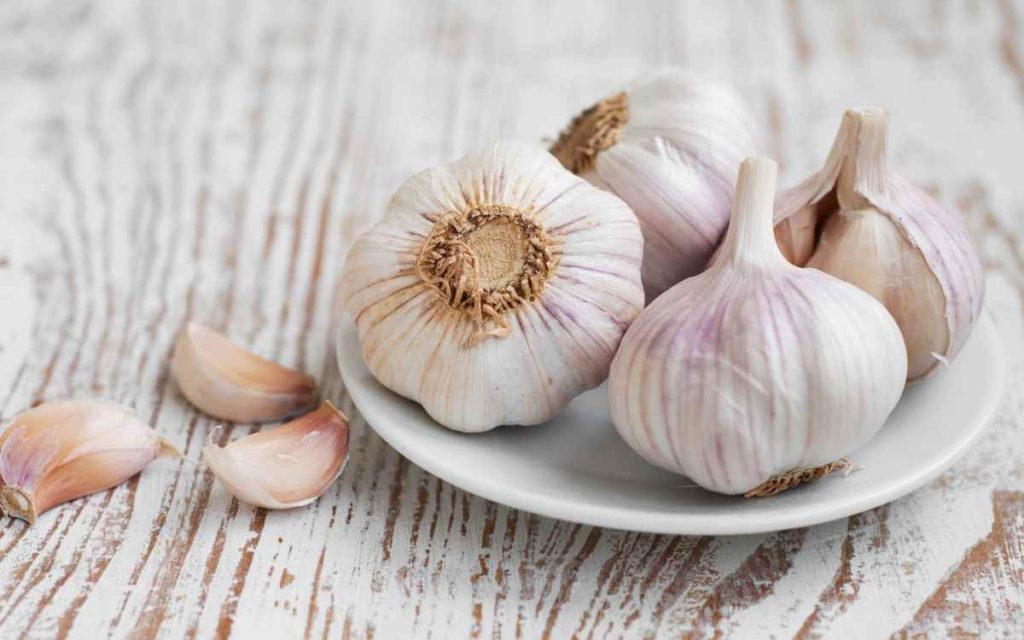
Let’s journey through the world of a small, aromatic bulb that’s been revered for centuries, not just for its flavor, but for its incredible health properties: Garlic.
Garlic Unveiled
Garlic might be familiar to many of us as that distinct-smelling ingredient that gives our dishes a flavor boost. But beyond its culinary applications, garlic packs a punch when it comes to benefits for our health. It’s not just food; it’s medicine wrapped in nature’s package.
The Anatomy of Garlic
- The Bulb: The garlic you buy is actually a bulb. It’s the underground part of the garlic plant.
- Cloves: When you peel open a garlic bulb, you’ll find multiple segments. Each of these is a garlic clove. This is where the magic resides.
- Skin: Each clove is protected by a thin, papery layer. While we don’t eat the skin, it’s essential as it keeps the clove fresh.
Why Garlic is Amazing
- Natural Antibiotic: From ancient civilizations to your grandmother’s home remedies, garlic has been hailed as a natural antibiotic. It helps our body fight off various infections.
- Heart Health: Garlic has properties that can potentially help in lowering blood pressure and cholesterol levels, making it a friend to your heart.
- Antioxidant Boost: This humble bulb is packed with antioxidants that combat free radicals in our body, contributing to anti-aging and disease prevention.
- Digestive Health: Garlic aids in digestion and can help in flushing out toxins from the body.
How to Make the Most of Garlic
- Step 1: Choose Right: When buying garlic, look for bulbs that are firm to touch, with taut, unbroken skin. Avoid those that feel soft or have sprouted green shoots.
- Step 2: Store Properly: Store garlic in a cool, dry place, preferably in a mesh bag or a basket. Avoid plastic bags as they can cause sprouting.
- Step 3: Prepare to Use: Break a bulb to get individual cloves. Peel off the skin to reveal the fresh garlic underneath. You can now slice, chop, or mince it as per your recipe.
- Step 4: Maximize Benefits: To unlock garlic’s full health potential, chop or crush it and let it sit for about 10 minutes before cooking. This activates its beneficial compounds.
- Step 5: Cook or Eat Raw: While cooking garlic does reduce some of its health properties, it’s still beneficial. If you’re adventurous, try eating it raw, maybe in salads. But be prepared – it’s strong!
Bonus Tip: If you’re worried about garlic breath, try chewing parsley, fennel seeds, or green tea leaves to neutralize the odor.
A Gentle Reminder
Moderation is Key: While garlic is fantastic, you don’t want to overdo it. Too much can lead to digestive discomfort.
Potential Interactions: If you’re on medications, especially for blood thinning or blood pressure, consult with a doctor before increasing your garlic intake.
Garlic isn’t just a simple kitchen ingredient; it’s a powerhouse of nutrients and health benefits. It’s a testament to the fact that sometimes, the most potent remedies can be found in the most ordinary places. Next time you add that garlic to your dish, take a moment to appreciate this gift of nature – a tiny bulb with mighty strength!
Ginkgo Biloba
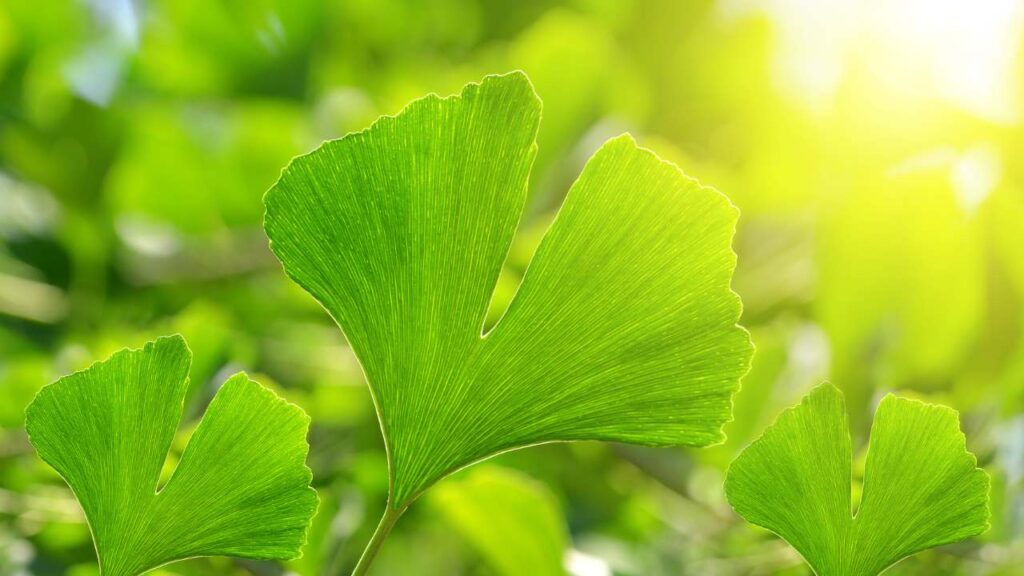
Picture a tree that’s so ancient, it watched the world evolve. The Ginkgo biloba is that sentinel of time. Beyond its historical significance, it holds potential remedies that modern science is tapping into, especially for ailments like early-stage fatty liver.
Derived from the leaves of the ancient Ginkgo tree, this herbal supplement has been used for centuries in traditional medicines. Recent studies, particularly on rodents, hint at its promise in addressing liver health issues.
Steps to Using Ginkgo Biloba for Fatty Liver:
- Step 1: Understand the Connection: Research on rodents has shown that ginkgo biloba can help reduce liver fibrosis (scarring) and enhance liver function. It’s believed that the potent antioxidants in ginkgo combat oxidative stress, a significant contributor to liver damage.
- Step 2: Sourcing Quality Ginkgo: Not all supplements are made equal. Ensure you purchase ginkgo biloba from reputable sources. Look for products standardized to contain 24% flavone glycosides and 6% terpene lactones, the primary active compounds.
- Step 3: Dosage Details: Generally, for liver health and cognitive benefits, a dosage of 120-240mg of standardized ginkgo extract daily is recommended. However, always consult a healthcare professional before starting any new supplement.
- Step 4: Monitor and React: While ginkgo is generally safe, side effects like headaches, dizziness, or digestive issues might occur. It’s always wise to start with a lower dose to see how your body responds. If you’re on medications, especially blood thinners, consult your doctor since ginkgo might interfere with them.
- Step 5: Incorporate a Holistic Approach: While ginkgo biloba might assist liver health, a holistic approach is crucial. This includes a balanced diet, avoiding excessive alcohol, maintaining a healthy weight, and regular exercise.
- Step 6: Stay Informed: Research is ongoing. Stay updated on the latest findings regarding ginkgo biloba and its impact on liver health. The more you know, the better decisions you can make.
Benefits of Ginkgo Biloba: Beyond the Liver
- Brain Boost: Ginkgo has a long-standing reputation for improving memory and cognitive function. It’s believed to achieve this by improving blood flow to the brain.
- Antioxidant Powerhouse: Free radicals can cause cell damage. Ginkgo’s antioxidant properties help combat these free radicals, contributing to overall health.
- Mood and Anxiety: Some studies suggest potential benefits of ginkgo in managing mood disorders and anxiety.
The world of herbal remedies is vast, and Ginkgo biloba stands out as a star player, especially with the emerging evidence of its benefits for liver health. But remember, while supplements can aid, the foundation of liver health remains a healthy lifestyle. Think of ginkgo not as a magic bullet, but as a supportive friend, guiding your liver towards a path of recovery and vitality. And as always, make informed decisions and consult professionals when in doubt.
References:
The 10 Best Herbs for Liver Health: Benefits and Precautions (healthline.com)
https://www.ncbi.nlm.nih.gov/pmc/articles/PMC4671772/
https://www.ncbi.nlm.nih.gov/pmc/articles/PMC3020385/
Herbal remedies for liver fibrosis: A review on the mode of action of fifty herbs – PMC (nih.gov)
